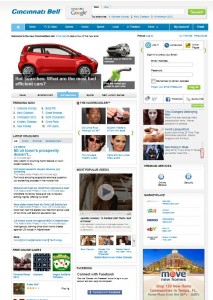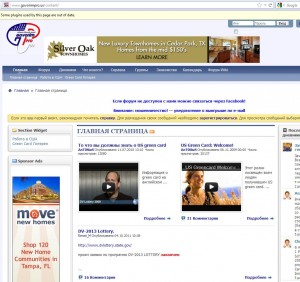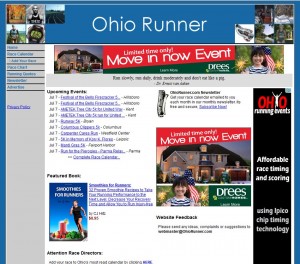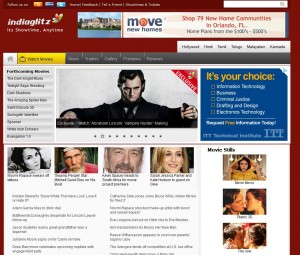 Banner Ad Retargeting — it’s the hottest buzz word for online marketers and a growing trend amongst many players in the online space, but what exactly is it and how does it work?
Banner Ad Retargeting — it’s the hottest buzz word for online marketers and a growing trend amongst many players in the online space, but what exactly is it and how does it work?
Imagine spending your marketing dollars by only getting in front of people who have some knowledge of your brand. Banner Ad Retargeting does just that. Simply put, it allows you to concentrate and maximize all of your efforts on your current pool of consumers. This process is quick and painless, involving only one short line of code on your website. When a user visits your site, that single line of code drops a cookie onto the user’s computer which triggers an alert for the Retargeting campaign to activate. Once they begin visiting other websites, your banner ads will follow them across the internet, serving as constant reinforcement for your brand and a means for them to return to your site. For the building industry, BDX has created the builder BeBack program solely meant to retarget YOUR traffic in order to increase lead conversion for your home-properties.
“Just how many websites will our Retargeting campaign run on?”
This is the single most common question I receive from our clients regarding BeBack. My answer to this question is remarkably simple: “How big is the Internet?” Without fail, the follow up question is, “and just how can I be sure that my banners will hit our users on relevant sites?” The answer to this question is just as simple. We will only retarget users on sites that they themselves visit, so in a way, users are ONLY shown banners on sites that are relevant to their interests and lifestyle. What’s fascinating is that by filtering through the thousands of domains where our ads have run I’ve noticed that the interest of one user is typically very similar to all of the others. By doing this it’s easy to paint a very robust picture of the online foot-print a typical home-shopper leaves across cyberspace.
For our own marketing efforts, NewHome Source.com runs several hundreds of thousands of impressions each month across a little more than 26,000 unique domains. Many of these impressions appear on major, nationally recognized websites like careerbuilder.com, toysrus.com, homes.com, facebook.com, eonline.com, petfinder.com, Zillow.com, and webMD.com. By looking at just these domain names I can almost see this person in my head. I can tell that our he/she is more than likely female, late 20’s to mid 30’s, has young children, and is very career driven. For our builders, can you imagine a more qualified home-shopper that you’d like to reach?
Filtering through these domains has given us additional insight into not only who the shopper is, but where they’re shopping and how often. For the last two months, roughly 25% of all of our view thru conversions have come as a result of banners located on other real-estate sites. This tells me two things. First, consumers in this phase of the purchasing process are shopping multiple websites; gathering data and considering all of their options. For advertisers, having a broad reach across these sites is essential to stay top of mind and drive awareness. This is one of the main reasons we launched the Builder Vertical Ad Network – to help builders maximize reach though a single point of contact with guaranteed results.
Second, advertisers should consider looking beyond just real estate websites when reaching their customers. If they didn’t, advertisers run the risk of ignoring potentially all conversion traffic from other sites (75% in our case). That’s the benefit of Be Back; it allows marketers to target the audience and not the website. This allows for a more efficient media spend while reaching your most valuable prospects especially as their online search takes them through sites ranging in scope from small builder websites to massive real estate search engines.
Below are a few interesting websites where you probably wouldn’t do a direct media buy, but have resulted in a click to lead conversion with BeBack. What’s even more interesting is that many times the ad will redirect to an area that has nothing to do with the market from which they shopped. For example the conversion off of OhioRunner.com came from a Philadelphia banner, meaning that consumer was likely looking for a home in Pennsylvania while still living in Ohio.




For more information about this blog post or BDX BeBack retargeting, contact Thane Tennison, Advertising Manager or contact your local Representative.
 As the BDX continues to expand its advertising solutions we’ve noticed many builders do not have a privacy policy clearly accessible on their website. This is an important if not often overlooked feature for a professional website.
As the BDX continues to expand its advertising solutions we’ve noticed many builders do not have a privacy policy clearly accessible on their website. This is an important if not often overlooked feature for a professional website.
 In 2011 Facebook became the largest Ad Network of all publishers representing almost 1/3 of display inventory. Historically, I’ve not been too thrilled with Facebook performance. It’s had a reputation for high bot traffic, low clicks and relatively poor backend conversion. I’m also convinced that to be successful with Facebook an advertiser needs a series of creative offerings since the high-frequency can result in ads getting stale quickly and losing their initial performance.
In 2011 Facebook became the largest Ad Network of all publishers representing almost 1/3 of display inventory. Historically, I’ve not been too thrilled with Facebook performance. It’s had a reputation for high bot traffic, low clicks and relatively poor backend conversion. I’m also convinced that to be successful with Facebook an advertiser needs a series of creative offerings since the high-frequency can result in ads getting stale quickly and losing their initial performance. I’m not sure if you’ve seen it yet, but Realtor.com is launching a new redesign of the Search Result pages. Currently the site is only in beta with plans for a full launch later this week. The Realtor.com Product Team has adjusted the layout to improve navigation and help consumers better manage the thousands of homes available via the MLS.
I’m not sure if you’ve seen it yet, but Realtor.com is launching a new redesign of the Search Result pages. Currently the site is only in beta with plans for a full launch later this week. The Realtor.com Product Team has adjusted the layout to improve navigation and help consumers better manage the thousands of homes available via the MLS. Banner Ad Retargeting — it’s the hottest buzz word for online marketers and a growing trend amongst many players in the online space, but what exactly is it and how does it work?
Banner Ad Retargeting — it’s the hottest buzz word for online marketers and a growing trend amongst many players in the online space, but what exactly is it and how does it work?



 If you’ve done any type of online display advertising you’ve probably heard quite a bit about view thru and attribution beyond the click. TV, Radio, and billboards have all based their success on some level of view thru. Meaning, because a consumer was exposed to your ad, your message is top-of mind and they are more likely to take action. And it’s true, advertising does work. I’ve seen it over and over again.
If you’ve done any type of online display advertising you’ve probably heard quite a bit about view thru and attribution beyond the click. TV, Radio, and billboards have all based their success on some level of view thru. Meaning, because a consumer was exposed to your ad, your message is top-of mind and they are more likely to take action. And it’s true, advertising does work. I’ve seen it over and over again.